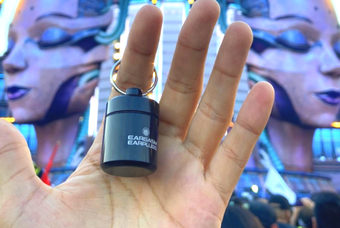Inserting Earplugs for Proper Protection
3 Crucial Steps
It’s essential to protect your ears from loud noises; concerts, certain vehicles, working with loud machinery, or other noisy situations may impair your hearing abilities if you don’t take action now to protect your ears. So what’s the solution? Earplugs!
Earplugs are an amazing solution and can offer exceptional protection. If you’ve just purchased a pair and don’t know how to put in your earplugs, read along to learn how to wear earplugs easily.
How to fit earplugs? It’s simple. All you need to do is follow these 3 steps:
If you’re curious to learn more about what a pair of earplugs can do for you, we’re going to break it down, so keep reading!
Why Consider Using Earplugs?

You may have considered purchasing earplugs at some point in your life due to work, hobbies, or other activities you enjoy doing. Maybe you already have them, but they’re sitting in their pretty case stored away in your drawer
Those with specific job types definitely need earplugs! Photographers for nightclubs, concerts, or music festivals, for example, or those surrounded by heavy equipment and loud machinery every day.
Once you start feeling like a certain level of volume is too loud, it’s time to consider wearing earplugs for safety and comfort.
Why? Because exposure to excessively loud noise leads to hearing loss. In fact, the NIOSH issues guidelines to limit occupational exposure levels to 85 dB for 8 hours. This is due to the fact that exposure above these levels can potentially cause permanent damage to your ears.
But what does 85 dB sound like? For reference, sounds from city traffic can reach 85 dB. Noise coming from heavy machinery, nightclubs, concerts, compressors, leaf blowers, or jackhammers, on the other hand, can reach OVER 100 dB. Now that’s loud!
How to Provide the Best Protection to your Ears?
Click Here to Check out Eargasm Slide Earplugs
Earplugs! High Fidelity Earplugs are a great way to protect your ears, while still hearing the world around you. Remember to ensure the utmost protection by inserting them correctly.
Each ear protection option works in different ways to protect your hearing:
- Earplugs: They block your ear canal through an airtight seal. Be sure to select the correct size and shape for your ears. How to fit earplugs? Easy, just pull, push, and twist. See the video below for details!
- Earmuffs: These will firmly fit over your outer ear to reach an airtight seal. Earmuffs are held in place via a headband that is adjustable. Try to avoid wearing these over glasses or long hair, as they may lose the seal.
- Noise-canceling Earphones: Similar to earmuffs; however, their primary function is to block background noise. These are perfect for added comfort during car rides (as a passenger), flying, riding the bus, or in environments with loud background noises like universities, school cafeterias, office settings, etc.
In some cases, people prefer wearing earplugs and earmuffs together. This is a great choice when the noise level is over 105 dB. To give you an idea, this is louder than a pneumatic drill or chainsaw - whoa. A combination of earplugs and earmuffs can add around 15 dB of extra protection!
So, What are Your Options?
All this sounds great, but how do you know which earplugs are right for you? It’s imperative that you know so that you have the right protection needed for your ears; take a look:
-
Custom-made earplugs: Purchasing custom-made earplugs is commonplace for those that have visited a healthcare professional and had them specifically made to fit your ears. If you have the budget, this is a great choice!
Audiologists highly recommend these for music lovers, musicians, and others interested in similar hobbies or professions. Custom-made earplugs will include a filter that softens all types of pitches and will not distort music!
- Reusable Earplugs: Manufactured from wax or silicone, reusable earplugs are durable and a much more affordable option in comparison to custom-made ones. Some even provide the same sound quality you can expect from those from an audiologist!
- Disposable Earplugs: Made of foam and designed for one-time use. This option is great for those situations where sound quality isn’t a priority like sleeping or studying.
Using Earplugs Correctly
Once you find the right fit, size, and style for you, ensure that you’re wearing and using them properly! You’d be surprised at how many people insert earplugs incorrectly and end up harming their ears.
If you have recently purchased a pair, learn how to use them or contact your provider for further instructions. If they were custom-made, ask your audiologist for guidance.
Final Thoughts: Don’t Store Your Earplugs Away. Wear Them!
Earplugs are made to protect you. If you felt the need to purchase them at some point, put them to good use and protect your beloved ears! And if you keep forgetting to wear them, put them somewhere where you’ll see them frequently, like your car keys (that is, of course, if they come with a handy carrying case, as Eargasm Earplugs do)
Not only do earplugs aid at work or during hobbies, but they will also help you hone in on what’s important - enjoying and focusing on the task at hand. Nothing is as distressing as having noise driving your attention away constantly.
For this reason, we encourage you to use earplugs whenever you feel you need them. When something feels a little “too loud”, pop them in, no questions asked. Not only will you get used to them rather quickly, but you will be doing your hearing health a huge favor.
Still, have questions or concerns regarding inserting or using earplugs? Contact us for more information.











